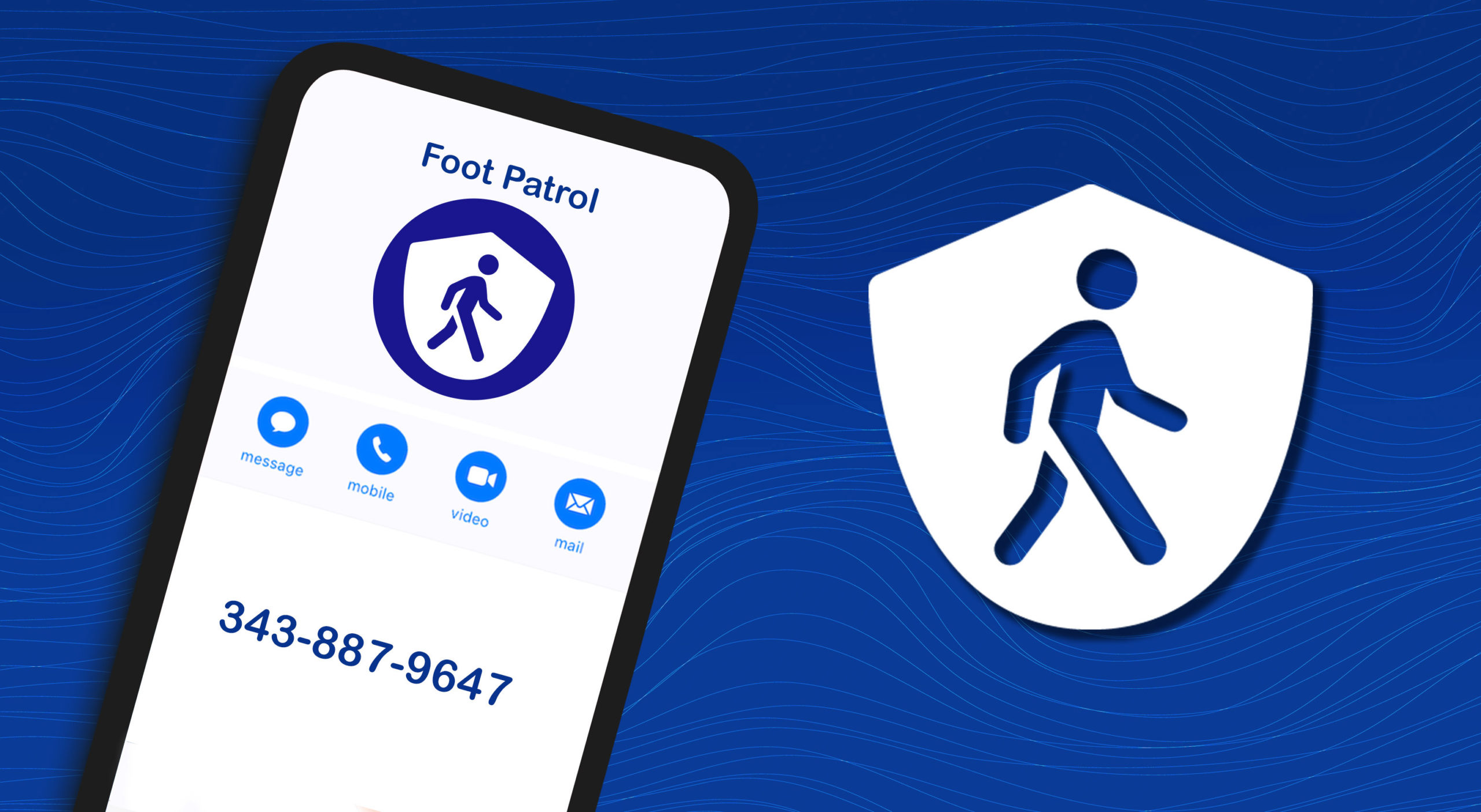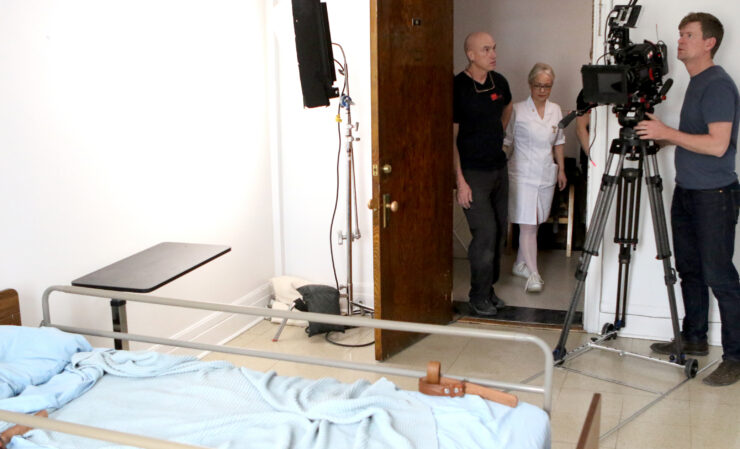UOSU cut safe-walk service last summer, sparking backlash from students and advocates
At the University of Ottawa, Foot Patrol was a trusted service offering students a safe and dependable way to get home, especially during late hours. But last year, the program was suddenly shut down, leaving many—especially women and marginalized students—feeling unsafe. The decision was made as part of University of Ottawa Students’ Union (UOSU) budget cuts, which sparked backlash from students, advocacy groups, and former volunteers.
A Budget Cut With Consequences
Foot Patrol was one of four student services cut when UOSU overhauled its budget, a decision that sparked backlash across campus. A reduction in student fees reduced UOSU’s revenue, prompting the executive team to discontinue Foot Patrol alongside the Multi-Faith, Bilingualism, and Peer Help Centres.
“We don’t know all the answers for student safety around campus following the closure of Foot Patrol,” UOSU president Delphine Robitaille said during the budget discussions. Robtitaille acknowledged Foot Patrols’ impact but argued that its operating costs and service numbers — which led to each walk costing around $800 — was unsustainable.
“I find it astonishing that any of these services were cut, but I am especially angered that Foot Patrol was one of them,” said Suzanne Gruz, a former Foot Patrol administrator and current candidate for UOSU president. “Budget cuts should never come at the expense of student safety.”
Even those closely involved with Foot Patrol were blindsided by the decision. “I couldn’t believe it when I found out,” said Eve Tremblay, who oversaw human resources for Foot Patrol and is now running for the executive position of Francophone affairs commissioner. “No one even consulted the staff who worked with us. It was just shut down overnight, and students weren’t given any explanation.”
With no safe-walk service in place, students are now left to find their own ways home at night, raising concerns about campus safety.
Advocates Say Losing Foot Patrol Puts Students at Risk
Since Foot Patrol shut down, there’s been no real alternative for students who don’t feel safe walking alone. The Feminist Resource Centre (FRC), which often connected students—especially survivors of sexual violence—with the service, says the loss has had serious consequences.
“During my time as a sexual violence advocate, I recommended Foot Patrol to anyone who needed a safe walk,” Gruz explained. “I even included it in the UOSU Sexual Violence Policy as an interim measure for survivors. Now it’s gone, and there’s no replacement.”
Since Foot Patrol’s closure, reports of safety concerns have surged, especially at the FRC. Students who once relied on the service—many of whom have experienced harassment or assault—now find themselves without a trusted safe-walk program.
“When you remove a service like this, you’re telling students their safety doesn’t matter,” Tremblay added.
Robitaille defended the decision at the time and said that UOSU was evaluating alternatives during the summer, when Foot Patrol was normally inactive, saying “ “we’re taking that time to look at all our options.” While UOSU had aimed to introduce a replacement, none has been announced.
More than just a safe walk program
Foot Patrol wasn’t just about walking students home—it played a huge role in campus safety and bringing people together. Volunteers didn’t just walk students home—they ran safety workshops, raised money for groups like CALACS, and helped with security at campus events, from formal galas to student protests.
For many of them, it was more than just a volunteer job—it was a way to connect with others.
“It wasn’t just about safe walks,” said former volunteer Abigail McLeod. “We built a community where students looked out for each other. It made campus feel safer, and it gave us a sense of purpose.”
Tremblay echoed that Foot Patrol wasn’t just about safety—it also brought students together. “The volunteers loved what they did. They stayed late, they made friends, they built a team. It wasn’t just a service—it was a community,” she added.
Before its closure, Gruz led an ambitious campaign to expand and modernize Foot Patrol. With her leadership, the team grew to 40 plus volunteers. Shifts were easier to manage, and new training videos helped volunteers feel more prepared. She also focused on making sure students actually knew the service existed.
“We had built up momentum,” she said. “There was a clear demand for the service, and we worked hard to make it more accessible. Yet, despite these improvements, it was still shut down.”
Gruz even proposed a new Safe Walk program to replace Foot Patrol, engaging former volunteers and creating a structured training system. But the initiative stalled when UOSU leadership failed to act on it, leaving students without any safe walk service.
“The frustrating part is that they never asked staff for input,” Tremblay said. “There were other ways to improve the service without cutting it entirely. At the very least, students deserved to have a say in what happened.”
Volunteers Want It Back
Many former volunteers have expressed disappointment at the shutdown and frustration that their efforts to keep the service running were ignored.
Former volunteers described the shutdown as devastating, not just for campus safety but for the friendships and trust the program built.
Tremblay believes that, at the very least, an alternative should have been provided. “We were told something like this would be brought back in a new structure, but that hasn’t happened yet,” she said. “Students need this service, especially first-years who are new to the city and campus.”
Could Foot Patrol Be Revived?
Many students believe eliminating Foot Patrol was a mistake and are calling for UOSU to reconsider its priorities. Both Gruz and her opponent, Jack Coen, have pledged to reinstate a cost-efficient version of the service if elected UOSU president.
“Students are feeling the absence of this service,” Gruz said. “With better budgeting decisions, we could reinstate it.”
Advocates suggest that a restructured Foot Patrol, relying more heavily on volunteers and fewer paid staff, could make it financially viable.
What’s Next for Campus Safety?
With no direct replacement for Foot Patrol, students are left to navigate campus safety on their own. Many have voiced concerns about the lack of a formal walk-home service.
Students want to know what will take Foot Patrol’s place,” Gruz said. “It was the only service left out of UOSU’s alternative programming. What option do students have now for a safe walk home?
For now, students rely on informal safety measures without a walk-home program. However, students aren’t giving up on getting Foot Patrol back. With growing concerns about safety, the push to bring back a safe-walk service is not over.
With Foot Patrol gone, the campus feels less safe, and there’s nothing to replace it. The demand is clear—students need a safe way to get home.






